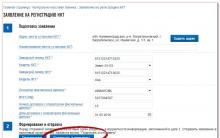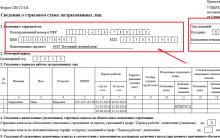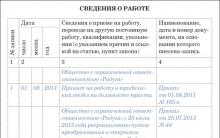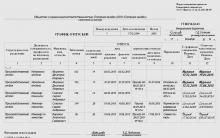If an employee has an accident at work, as a result of which his health has suffered (or even the situation has resulted in death), then by law the employer must investigate and compensate for the harm caused to the victim. Find out what obligations in the field of employee insurance are regulated by the current legislation of the Russian Federation, find out what constitutes an industrial injury, what guarantees and compensations an employee provides labor legislation.
What is an industrial accident
This is an event due to which the insured person was injured or otherwise injured while he was performing the duties prescribed in the employment contract. This concept also includes tragic situations that happened when an employee was sent to home or work, it affects the time of breaks between work shifts. If an employee is injured while on a business trip, this is also considered an accident. This definition is taken from Federal Law 125-FZ.
Legal regulation
Compared with the legal regulation that was in force before 01/01/2007, at the present time, the range of emergency situations that are considered accidents that occurred on the production site is outlined by Federal Law No. 125-FZ. All other tragic incidents, when an employee experiences temporary disability, are regulated by Federal Law No. 255-FZ and other regulations.
Labor Code of the Russian Federation
A detailed definition of what an industrial accident is is written in the Labor Code of the Russian Federation (Article 227). So, an industrial injury is an event, the result of which for the victim was:
- damage by radiation, electric current, lightning;
- burn;
- drowning;
- damage due to explosions, natural disasters, destruction of buildings, structures, structures, accidents and other emergencies;
- heatstroke;
- frostbite;
- bodily injury, including injury caused by another person;
- other damage to health that occurred as a result of external factors, due to which it became necessary to transfer the employee to another place of work, there was a permanent or temporary loss of his ability to work, or injuries resulted in the death of the victim.
Federal Law "On Compulsory Social Insurance against Industrial Accidents and Occupational Diseases"
The legislation of the Russian Federation provides for insurance of occupational diseases and compulsory social insurance against industrial injuries. The federal law implies compensation for harm that was caused to the health and life of the insured person while he was fulfilling his duties specified in the employment contract or in other cases established by the current Federal Law. Reimbursement is provided in full, this will also include the payment of expenses for treatment in a medical institution, vocational rehabilitation and social.
What about accidents at work
The main situations for qualifying tragic events as work-related injuries are:
- If the injuries were received at the workplace, on the way of the employee to the production (from it) on official vehicles (or on a personal car in situations agreed by the parties) or at the place of business trip.
- When an employee performs official duties in accordance with the order of the head or official actions provided for by the employment contract.
Consider examples of accidents at work, on a business trip, and on vehicles owned by the organization:
- Auto mechanic P.P. Ivanov, while repairing a company vehicle, burned his hands with hot machine oil. Ivanov performed his direct duties during working hours. If the auto mechanic is officially employed, has insurance against the National Assembly, burns caused temporary disability, then this situation is a 100% accident at work.
- Foreman Petrov was sent on a business trip to a construction site. For example, a closed head injury that an employee received during an inspection of a construction site will be considered production.
- The driver Sidorov, on his way to work in a company car provided to him by the organization, got into an accident in which he broke his arm or leg.
Classification
Industrial injuries are divided according to the consequences and the number of injured persons. According to the number of victims, individual and group (from two or more injured persons) are distinguished. According to the consequences, light, severe and fatal injuries are distinguished. The severity of the harm caused to health is determined in accordance with the order of the Ministry of Health and Social Development No. 160 "On determining the severity of health damage in case of accidents at work."
Kinds
In the legislation of the Russian Federation, the following types of accidents at work are distinguished:
- Transport accidents: on water transport, land, air, railway when moving to the place of work on the employer’s transport, while traveling by personal transport for official purposes, during a business trip by public transport, when walking to the place of work.
- Fall of an employee from a height, fall on a flat surface, which includes: a fall on a slippery surface; a fall as a result of a trip, slip or false step.
- Fall at different levels of heights, to depth.
- Falls, collapses of objects, ground, collapse of materials, etc.: collapses of walls, stairs, buildings, scaffolding, etc.; scree and collapse of rocks, snow, earth, stones.
- Hits by falling parts and objects (including their particles and fragments) while working with them.
- Blows inflicted by various kinds of falling objects.
- Impact of flying, moving, rotating parts, objects, etc.: contact bruises resulting from a collision with stationary parts, objects, machines, they also include blows resulting from an explosion; contact blows received when a worker collides with moving parts, objects, machines, as a result of an explosion.
- Pinching a person and other contacts with moving or stationary machines, objects, parts.
- Strong physical exertion, overexertion.
- The entry of a foreign body through the skin or natural openings in the body.
- Impact of natural factors, extreme temperatures (low or too high).
- Impact of lightning, electric current, radiation.
- Exposure to fire, smoke, flame.
- Exposure to harmful substances.
- Immersion in water, drowning.
- Damage resulting from the intentional actions of an employee aimed at causing harm to their own health.
- Damage in emergency situations of technogenic, natural, criminogenic and other nature.
- Exposure to any other unclassified factors leading to injury.
What accidents are subject to investigation
If an employee was injured at the enterprise, then the boss is obliged to investigate the incident. According to the provisions of the Labor Code, the following situations are subject to investigation:
- When a worker or other persons involved in the production process received an injury, but on the condition that the National Assembly took place while the employee was performing his duties or acting on behalf of the head.
- Injury to a worker while traveling to work as a shift worker or during shift intervals.
- Tragic situations that occurred when an employee was on his way to or from work, and it does not matter here what type of transport was used: personal or manager's transport. This item includes the time until the employee gets to the place of performance of his duties on behalf of the boss.
- Situations that resulted in injuries and injuries, provided that the worker received them while in the territory under the control of the boss, at the workplace and it was during working hours. This item also includes injuries received during the period allotted for the preparation of the workplace or upon completion of work.

Actions in the event of an accident at work
An employee who has been injured at work should first of all seek medical attention. If the victim is an insured person and claims for temporary disability benefits, then he must present the sick leave to the head of the company. In addition, an employee who has become temporarily incapacitated as a result of an injury must notify the employing enterprise as soon as possible.
According to Decree No. 73 of the Ministry of Labor of Russia dated 10.24.2002, an employee who is injured on the territory of the company is obliged to immediately inform his employer (or management) about the incident. The deadlines for filing an application for an investigation of an industrial injury, about which the head of the company was not notified, are not established by the legislation of the Russian Federation.
Employer's obligations
The manager, in whose company the employee was injured, has a number of obligations in accordance with Art. 228 of the Labor Code of the Russian Federation. So, the employer or production manager is obliged:
- Provide emergency assistance to the injured employee, if necessary, transport him to a medical facility.
- Take measures to prevent the development of an emergency or other emergency and the impact of traumatic factors on other people at work.
- Preserve the situation as it was, if it does not lead to an accident, the emergence of other emergencies, does not pose a threat to the life or health of other persons, until the beginning of the investigation. If the situation cannot be saved, the boss must record it (video filming, photographing, drawing up a diagram, or holding other events).
- Inform the organizations and bodies specified in the current code, other regulatory legal acts of the Russian Federation and other Federal Laws about the employee's injury. If there has been a severe injury or an accident at work with a fatal outcome, then it is the responsibility of the employer to inform the relatives of the victim.
- Take measures to organize the investigation procedure, draw up investigation materials in accordance with the requirements of the Labor Code of the Russian Federation.
Procedure for notification of accidents
In the event of a group industrial injury, a serious accident or a situation resulting in the death of an employee, the manager (or representative) is obliged to send a notice to the following authorities within 24 hours:
- state labor inspectorate;
- local prosecutor's office;
- an executive authority of a subject of the Russian Federation and/or a local self-government body where an individual or legal entity is registered as an individual entrepreneur;
- to the employer who sent the employee to production, where he received an industrial injury;
- a territorial body of the relevant federal executive body exercising supervisory and control functions in the established field of activity, if an industrial injury was received at a production or facility controlled by this body;
- the executive body of the insurer, where issues of compulsory social insurance against industrial accidents and occupational diseases are considered;
- united trade union organization.
Commission formation
In order to investigate an employee's work injury, the manager must create a commission, which will include:
- employer representative;
- labor protection specialist or other person responsible for his work;
- a representative of an elected body who is a member of a trade union organization.
The composition of the commission is determined based on the severity of the industrial injury. So, if the injury is mild, then in addition to the employer heading the commission, it also includes a representative of the employer and a labor protection specialist. If the injury is qualified as severe (or the death of the employee has occurred), then the head of the commission is the state labor inspector. In addition to this official, the commission should include:
- union representative;
- a representative of a local self-government body or executive power of a constituent entity of the Russian Federation;
- representative of the body of the insurance company (if the victim was insured).
If an employee was injured at work, who, at the direction of his superiors, was doing work for another employer, then the supervisor (representative) who sent him there must be on the commission. It is forbidden to include in the commission persons who are entrusted with ensuring compliance with the requirements for labor protection in the territory where the tragic situation occurred.
What are the deadlines for an investigation?
Investigation of industrial accidents is carried out within 3 (if the injuries are minor) or 15 calendar days (in case of severe injuries or death). The term is calculated from the day when the order to establish the commission was issued. If necessary, the chairman of the commission may extend the investigation period for another 15 days. If it is impossible to complete the investigation on time due to the need to consider the circumstances of the situation by the bodies of inquiry, investigation or the court, the decision to extend is made in agreement with these organizations.
Cause Analysis
Determining the causes of industrial injuries is one of the main goals of the investigation. There can be several reasons leading to injuries: organizational reasons, technical, technological, personal, sanitary and hygienic reasons. In order for the determination and presentation of reasons to be correct and objective, the members of the commission should be guided by the following principles:
- The reasons follow from the circumstances of the National Assembly and are organically linked to the previous paragraphs filled in the act of investigation.
- It is necessary to formulate the reason concisely, clearly, legally and technically competently.
- In most cases, the cause of industrial injuries are organizational and technical reasons, therefore, the true cause of the incident must be indicated in the documents.
- Formulating and substantiating the reason, it is necessary to introduce specific violations of the employee, which were established by the commission, into the act.
- Concomitant causes of what happened should be stated immediately after the main cause. It is necessary to indicate the reasons directly and indirectly related to the tragic incident consistently, taking into account their significance.

Registration and registration of accidents at work
Based on the results of the investigation of an industrial injury, the materials listed in Parts 3 and 4 of Art. 229.2 of the Labor Code, then two copies of an act of equal legal force in the form of H-1 are drawn up. In the event of an incident with the insured person, an additional copy of the act must be drawn up. The document sets out in detail the causes of an industrial injury, the circumstances, it is necessary to indicate the persons who violated the requirements of labor protection. The act is signed by all persons who participated in the investigation, approved by the employer, certified by a seal.
In case of severe injuries, one copy of the investigation report and copies of the investigation materials are sent to the prosecutor's office, where the incident was previously reported. After that, copies of the act and copies of the materials of the investigation are transferred to the State Inspectorate, the territorial body exercising state control in the established area and the executive body of the insurer.
In addition, the employer is obliged to report to Rosstat on all industrial injuries that were registered at work. To do this, it is necessary to draw up a report in the form 7-injuries (form in Appendix No. 2 to the order of Rosstat No. 216 of 06/19/2013). This report is submitted at the location of a separate division of Rosstat or to its territorial office at the location.
The employer is also obliged to register each work-related injury, recording the data in form No. 9 in a special journal. It is necessary to enter the date and time of the tragic event, data on the injured employee, describe the circumstances of the incident, the consequences and indicate what measures were taken to eliminate the causes that led to this.
Compensation for damage
If the results of the investigation revealed that the victim suffered material harm, the issue of compensation can additionally be raised. For example, we can talk about reimbursement of funds spent on:
- treatment of the victim;
- passing a rehabilitation course;
- payment for the services of a specialist who cared for the victim during his rehabilitation.
In addition, the loss of earnings (income) due to damage to health can also become a loss. Compensation can be collected both in court and out of court. It should be noted that according to Part 2 of Art. 1085 of the Civil Code of the Russian Federation, the determination of the amount of compensation is not affected by the payments, disability pensions, and benefits assigned to the victim before or after receiving the injury.
Insurance payments in case of an accident at work
The insurer is obliged to make an insurance payment (funds are formed from the insurance premiums of the insured) if the fact of damage to the health of the victim is confirmed, his belonging to the circle of the insured is proved, or there is a causal relationship between the accident and the fact of injury. Insurance benefits include:
- One time payment. The amount is determined, depending on the degree of disability of the injured, based on the maximum amount (in 2019 it is 92,339.10 rubles).
- Monthly payment. It is defined as the share of the average monthly earnings of an employee, calculated based on the degree of disability of the injured. The maximum amount of insurance payment per month cannot exceed 71,000 rubles - for 2019.
Temporary Disability Benefit
A victim who has an accident at work must receive temporary disability benefits, but the amount should not exceed the maximum of four monthly insurance payments. The monthly insurance payment, starting from January 1, 2019, is 72,290.4 rubles, so the maximum benefit will be 289,161.6 rubles.
Payment of additional expenses
The FSS of the Russian Federation pays additional expenses to the victim if he has a certificate issued by a medical and social examination, which says that the employee needs prosthetics, care, spa treatment, etc. The maximum amount of expenses for outside medical care is 900 rubles / month, an amount equal to 225 rubles is calculated for household care. Other expenses necessary for the rehabilitation of the victim are not limited to a maximum amount, they only need to be documented.

Consequences of an accident and employer liability
Entrepreneurs for failure to report an incident are subject to administrative liability in the form of a fine from 1 to 5 thousand rubles, for official legal entities - from 30 to 50 thousand rubles (or suspension of the enterprise for up to 90 days). If, during the verification of the investigation, a violation by the employer of the legislation on labor protection and labor is revealed, then he can be held liable in accordance with Article 5.27 of the Code of Administrative Offenses. Article 15.34 of the Code provides for penalties for concealing work-related injuries:
- for legal entities - 5000-10000 rubles;
- for officials - 500-1000 rubles;
- for individuals - 300-500 rubles.











How to issue a power of attorney to represent the interests of an LLC to an individual?
How to apply for an IP: step by step instructions
Form of power of attorney to receive goods or material assets
The deadline for registering an individual entrepreneur in the tax
Business plan for a law firm: an example with calculations legal support for a business